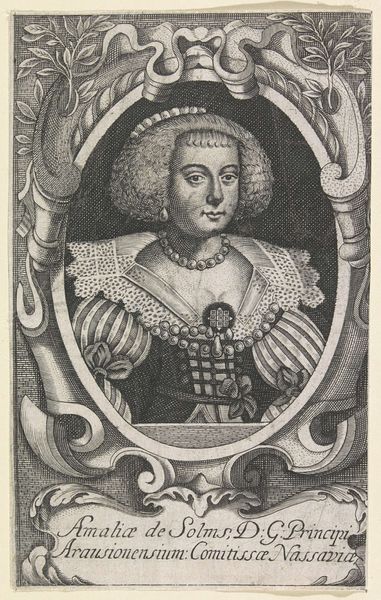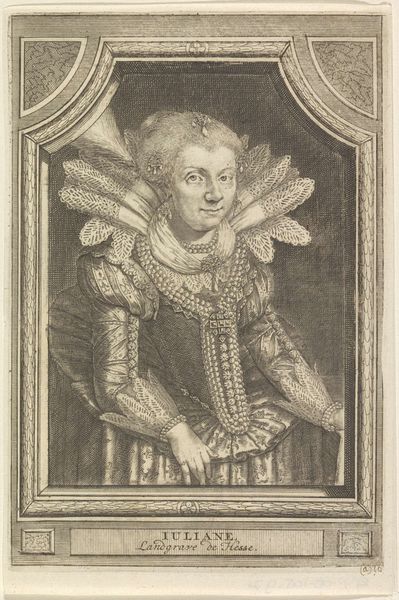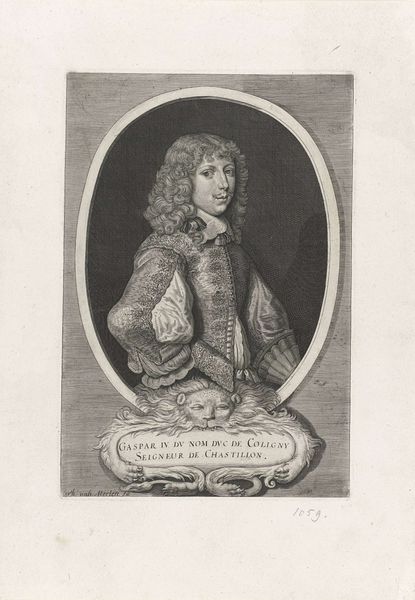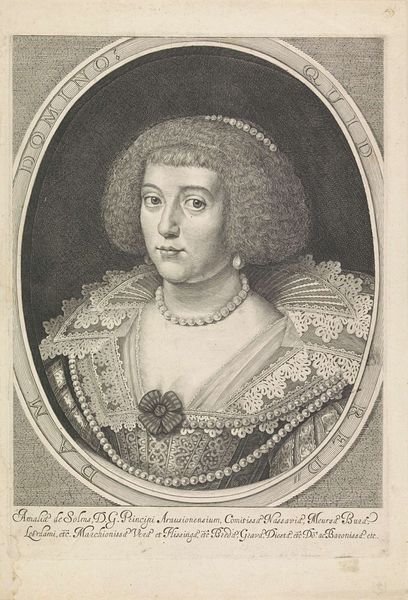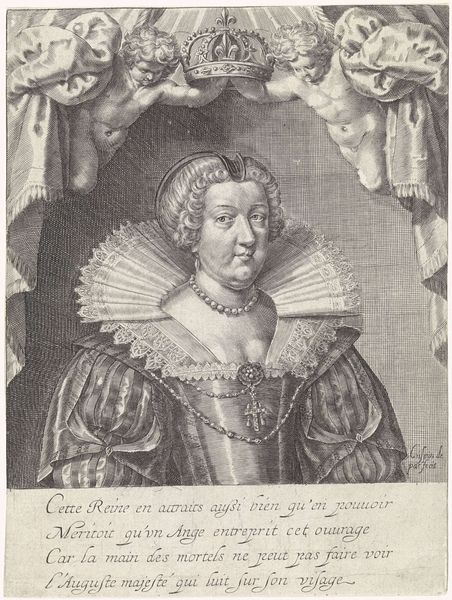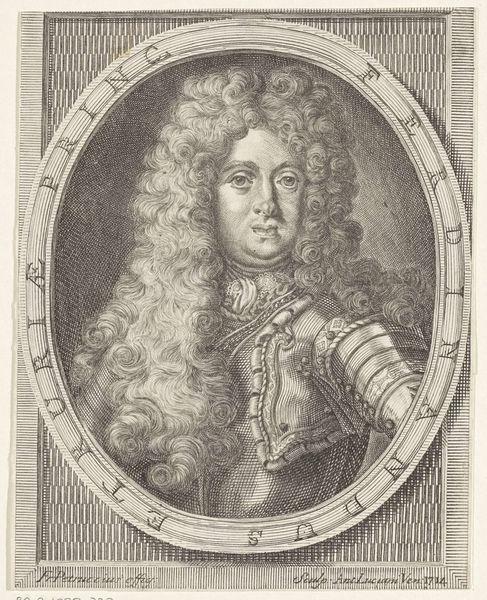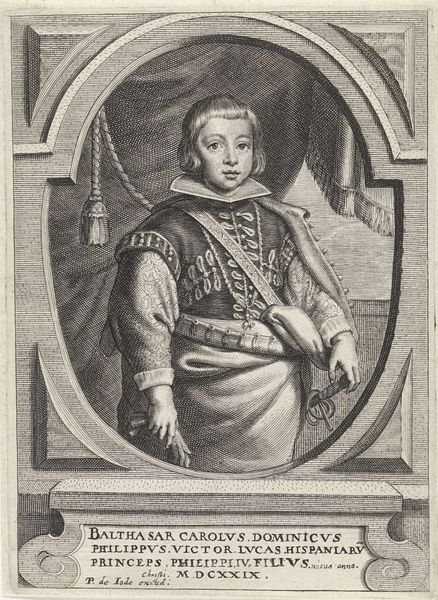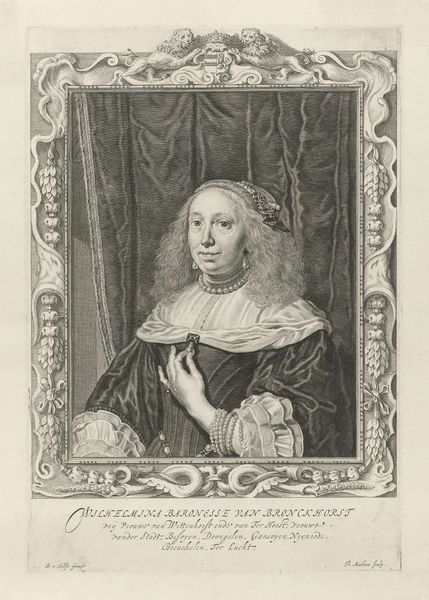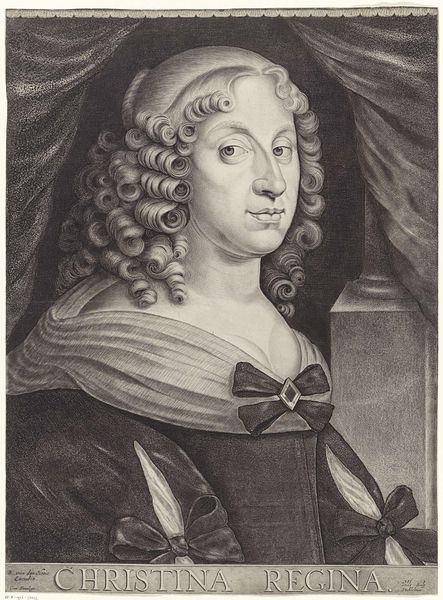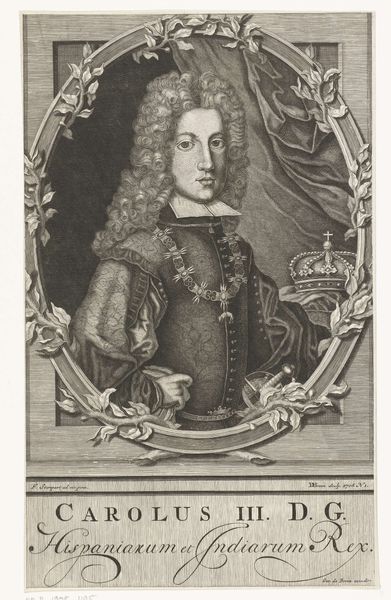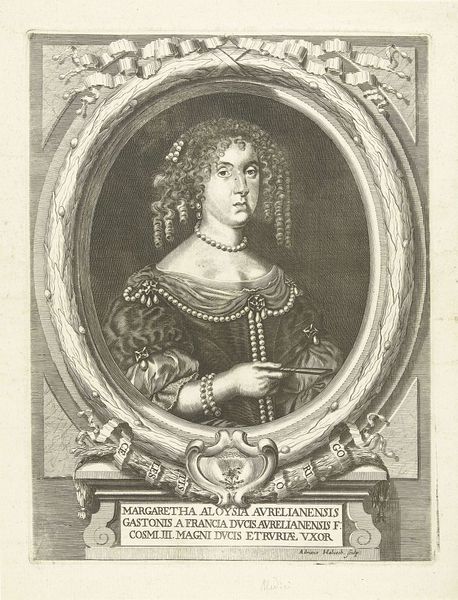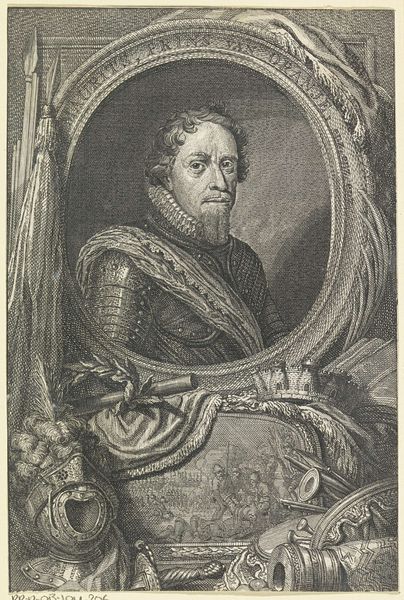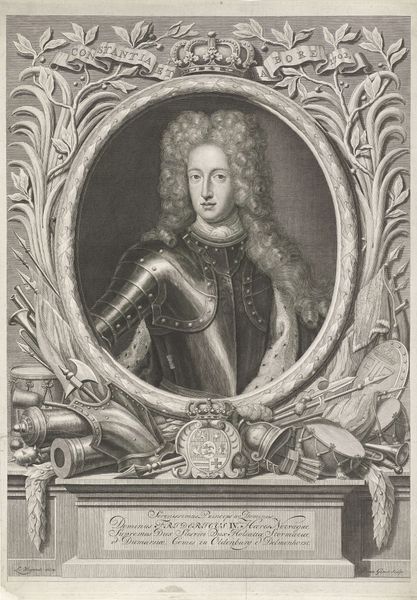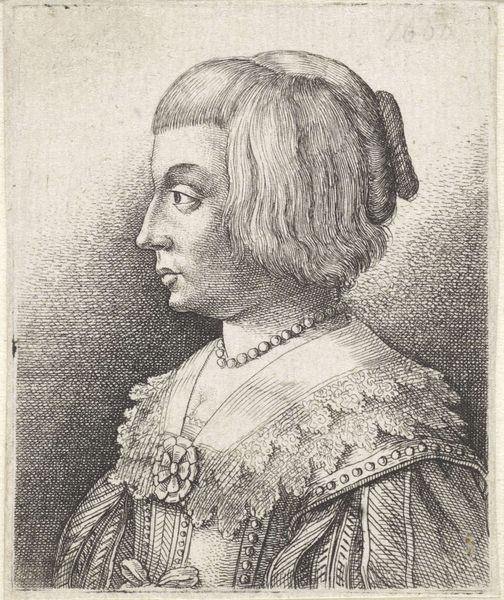
intaglio, engraving
#
portrait
#
baroque
#
intaglio
#
old engraving style
#
figuration
#
portrait reference
#
portrait drawing
#
history-painting
#
engraving
Dimensions: height 267 mm, width 197 mm
Copyright: Rijks Museum: Open Domain
Wenceslaus Hollar made this portrait of Aletheia Talbot, Countess of Arundel using etching, a printmaking technique that relies on the corrosive power of acid. Think of it: metal physically eaten away to define her likeness. The image starts as a polished copper plate, its surface coated in a waxy, acid-resistant ground. The artist then scratches through this ground with a needle, exposing the metal. Immersed in acid, the lines are bitten into the plate. Ink is then forced into these recessed lines and the plate is pressed onto paper, transferring the image. Consider the sharp, precise lines that define Talbot’s features and elaborate garments. The controlled, repetitive process speaks to a burgeoning print market, feeding a demand for reproducible images that could circulate widely. This wasn't just about art; it was about commerce and access. The very materiality of the print – the etched lines and the paper it's printed on – tells a story of labor, skill, and the democratizing potential of art in the age of mechanical reproduction.
Comments
No comments
Be the first to comment and join the conversation on the ultimate creative platform.
